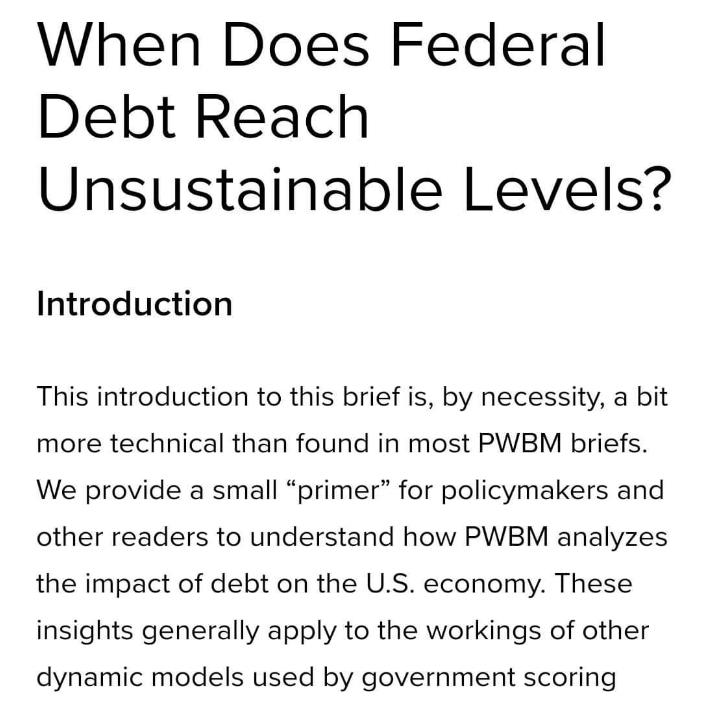by theSilverVigilante

As of September 30, 2023, the federal “debt held by the public” (herein, “debt”) stood at $26.3 trillion, or about 98 percent of projected GDP. The “public debt outstanding” of $33.2 trillion often cited in media is largely misleading and not relevant for assessing economic impact; about $6.8 trillion of that amount is from the federal government holding its own debt for accounting purposes. The economics profession has long focused on “debt held by the public.”
Still, even with the most favorable of assumptions for the United States, PWBM estimates that a maximum debt-GDP ratio of 200 percent can be sustained even if investors believe (maybe myopically) that a closure rule will then prevent that ratio from increasing into the future. Countries like Japan with an even larger debt-GDP ratio more-than offset their government debt with a household saving rate that is much larger than that found in the United States. This 200 percent value is computed as an outer bound using various favorable assumptions: a more plausible value is closer to 175 percent, and, even then, it assumes that financial markets believe that the government will eventually implement an efficient closure rule. Once financial markets believe otherwise, financial markets can unravel at smaller debt-GDP ratios.